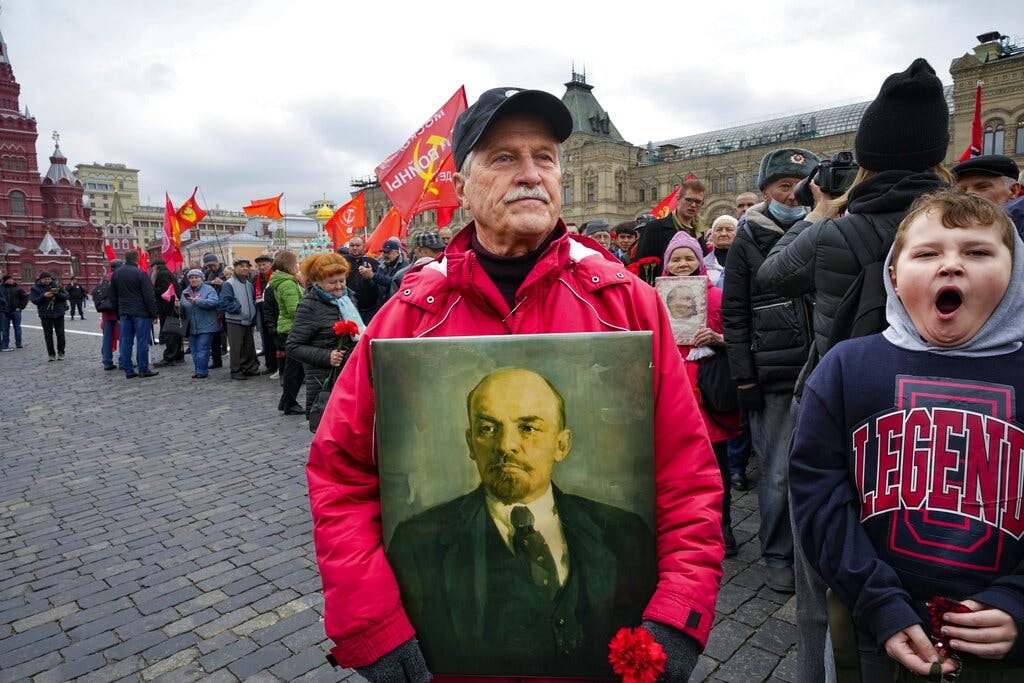Russia Facing a Demographic Shock, Census Data Show
New numbers might unravel the mystery of why Russia has begun kidnapping Ukrainians.

New Russian census data indicate that Russians themselves have fallen to 72 percent of Russia’s 147 million people, well below the 80 percent usually touted by the Kremlin. Reflecting sensitivity over the nation’s shrinking Slavic gene pool, the government quietly released this portion of its 2021 census during Russia’s long New Year’s holidays.
Even so, news stories citing “non-Russian” names of the first babies born in the New Year sparked a series of racist diatribes across Russia’s internet. The decade-long reduction in Russians came despite clear efforts by the government to massage numbers. It offers context for the current war.
With the annexations of Crimea in 2014 and much of Ukraine’s Donbas, Russia acquired 6 million Russian-speaking Ukrainians. However, the census reported that the number of Ukrainians registered as living in Russia dropped by 1 million over the decade. The number of Belarusians dropped by 60 percent, to 208,000. Most of these missing Slavs may have been reclassified as Russian.
With two Russians dying for every one born, Russia’s population now shrinks by 1 million persons a year, according to figures by Rosstat, the Federal State Statistics Service. With the median age now 40, Russia’s population could drop by the end of this century to 70 million.
That would be about half of today’s level, the chairman of the Institute for Demography, Migration and Regional Development, Yury Krupnov, told reporters in Moscow last week. Aggravated by the war shock, births last year dropped by 6 percent from 2021. Russia’s shrinking Slavic population may explain the Kremlin’s program to deport Russian-speaking Ukrainian civilians to Russia.
“Russian authorities have interrogated, detained, and forcibly deported between 900,000 and 1.6 million Ukrainian citizens, including 260,000 children, from their homes to Russia — often to isolated regions in the Far East,” Secretary of State Blinken said last July.
That was near the highwater mark for Russia’s military advances in 2022. “Reports,” said Mr. Blinken, “also indicate Russian authorities are deliberately separating Ukrainian children from their parents and abducting others from orphanages before putting them up for adoption inside Russia.”
As Russia plans to draft 350,000 more men in the next two months, recruiters face a manpower shortage. Last year, the war and the draft prompted 1 million Russians — overwhelmingly young men — to flee the country. To fill the ranks, Wagner, a private military corporation, recruited 40,000 convicts from prisons.
That is what the Pentagon spokesman, John Kirby, estimated last month. Of these soldiers, Wagner lost 4,100 dead and 10,000 wounded, a White House official told the Guardian two weeks ago. Overall, Russia has lost 180,000 killed or wounded during its 11-month assault on Ukraine.
Norway’s defense chief, Eirik Kristoffersen, gave that estimate to France’s TV2 on Sunday. By contrast, he estimated Ukraine’s military casualties at 100,000, and civilians killed at 30,000. Facing a shortage of Russian young men, Russia’s military leaders may raise the draft age to 30, from 27, and double the length of service, to two years.
From the war’s start, military recruiters targeted the areas that the 2021 census showed as the most demographically vibrant — the Muslim South. Of Russia’s 10 largest peoples, the only three that showed population growth were in the South — Chechens up by 243,000, and two groups in Dagestan — the Avars up by 100,000, and the Dargins up by 55,000.
By contrast, Slavic Russians were down by 5.4 million, to 105.6 million. Russians have largely disappeared from the North Caucasus. Of Russia’s 15 largest peoples, a majority, or eight, are now in the North Caucasus.
A former Soviet nationalities analyst for the CIA, Paul A. Goble, wrote last week: “All these nationalities have a vastly younger age structure with far more children under five compared to older cohorts and thus are on course to increase their rankings and demographic ‘weight’ still further in the future, a trend that flies in the face of Putin’s desire to Russianize if not Russify these and other peoples.”

